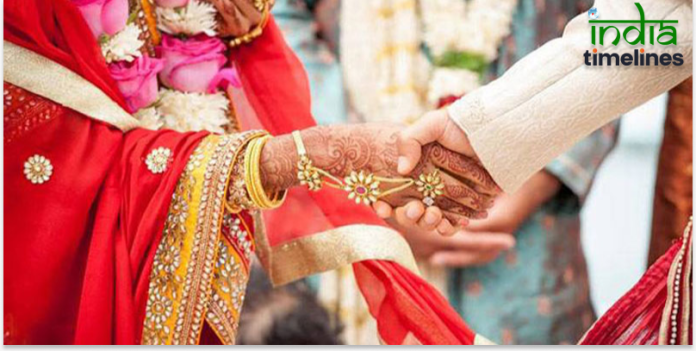
In Hinduism, the concept of time is deeply intertwined with spirituality and auspiciousness. People place great emphasis on performing important deeds at auspicious times, particularly for significant life events such as marriages, childbirth, and religious ceremonies. This long-standing tradition continues to hold importance today, with many believing that actions performed during a shubh muhurat (auspicious time) guarantee success and help eliminate obstacles. This blog will explore the significance of marriage, the concept of shubh muhurat, and the specific vivah muhurat for 2024, as outlined in the Hindu Panchang.
The Significance of Marriage in Hinduism
In Hindu culture, marriage is not just a union between two individuals; it represents a sacred bond that unites two families. Among the 16 samskaras (rituals), marriage is considered one of the most significant, symbolizing a second birth for the bride and groom. This sacred ceremony is believed to bring together not just the couple but also their families, creating new relationships that play a vital role in the social fabric.
The Role of Shubh Muhurat in Marriage
Choosing an auspicious time for marriage is integral to ensuring the happiness and prosperity of the couple and their families. Performing the wedding during a shubh muhurat is believed to facilitate harmony and long-lasting joy in the couple’s life. The process of determining an auspicious time begins with Panchang Shuddhi, a purification process that helps identify not just the right day for the wedding but also the specific timing for various marriage rituals.
Astrological Factors in Determining Vivah Muhurat
Astrologers employ various components from the Hindu Panchang, including solar and lunar months, as well as the purification of Nakshatras, Yogas, and Karanas, to ascertain the most favorable dates for marriage throughout the year. These astrological elements play a crucial role in ensuring that the marriage ceremony aligns with the cosmic energies that promote positivity.
The Importance of Matching Birth Signs
After analyzing the Gunas (qualities) in the horoscopes of both the bride and groom, the astrologer determines a specific date and time for the wedding based on their birth signs. Matching the zodiac signs is crucial in this process, as it helps identify a suitable date known as Vivah Muhurat. This method ensures that the cosmic energies during the marriage ceremony are favorable, further enhancing the prospects of a harmonious union.
Auspicious Dates, Nakshatras, Yogas, and Karanas for Vivah Muhurat 2024
Vedic astrology holds marriage in high esteem, considering it a propitious event that requires careful planning. Choosing an auspicious date and time involves selecting favorable dates, Nakshatras, Yogas, and Karanas. Here are some guidelines for determining the Shubh Vivah Muhurat in 2024:
Auspicious Karanas
Certain Karanas are deemed particularly favorable for marriage. These include:
- Kikinstughna Karan
- Bawa Karan
- Balavi Karan
- Kaulav Karan
- Taitila Karan
- Garo Karan
- Vanija Karan
These Karanas enhance the auspiciousness of the wedding ceremony, contributing to a successful union.
Favorable Muhurats
Two key Muhurats are considered the most auspicious for marriage:
- Abhijeet Muhurat: Known for its positive energy and auspiciousness.
- Godhuli Bela Muhurat: A transitional time that is considered favorable for new beginnings.
Auspicious Dates for Marriage
For 2024, the following dates are particularly auspicious for conducting marriage ceremonies:
- Dwitiya
- Tritiya
- Panchami
- Saptami
- Ekadashi
- Trayodashi
These dates are believed to carry positive vibrations, making them ideal for marriage.
Favorable Nakshatras
Of the 27 Nakshatras, several are considered auspicious for marriage. These include:
- Rohini Nakshatra
- Mrigashira Nakshatra
- Magha Nakshatra
- Uttara Phalguni Nakshatra
- Hasta Nakshatra
- Swati Nakshatra
- Anuradha Nakshatra
- Mool Nakshatra
- Uttarashada Nakshatra
- Uttara Bhadrapada Nakshatra
- Revati Nakshatra
These Nakshatras are thought to promote positive energies during the marriage ceremony.
Beneficial Yogas
The following Yogas are considered beneficial for marriage, contributing to a prosperous and happy life for the couple:
- Preeti Yoga
- Saubhagya Yoga
- Harshan Yoga
These Yogas create an environment conducive to love and harmony.
The Importance of Gunas Matching
The matching of Gunas plays a pivotal role in determining the suitability of the marriage. In Hindu Panchang, a Pandit or astrologer matches the horoscopes of the bride and groom based on 36 Gunas. For a successful marriage, it is essential to have a minimum of 18 Gunas matched. Here’s a breakdown of the significance:
- 18 to 25 Gunas: Considered average and acceptable for marriage.
- 25 to 32 Gunas: Deemed exceptional and indicates a strong compatibility.
- 32 to 36 Gunas: Represents an ideal match, suggesting a joyful married life.
Having a higher number of matched Gunas is believed to enhance the prospects of a harmonious and fulfilling marriage.
The Role of Favorable Planetary Positions
In astrology, the positions of planets at the time of marriage significantly influence the couple’s future. For brides, the presence of Jupiter in auspicious houses—second, fifth, seventh, ninth, and eleventh—is favorable. In contrast, its placement in the fourth, eighth, and twelfth houses is seen as unfavorable. For grooms, a favorable position of the Sun in the third, sixth, tenth, and eleventh houses is ideal, while placement in the fourth, eighth, and twelfth houses is considered negative.
Understanding Lagna Bhav in Marriage
Another essential aspect in determining the auspicious time for marriage is the Lagna Bhav (ascendant). This is calculated based on the time of the marriage ceremony. The Lagna is critical during the saat phere (seven rounds) taken by the bride and groom around the sacred fire. Ensuring a correct Lagna is vital; even a slight error may have adverse effects on the couple’s life. In astrological terms, the Tithi represents the body, the Moon the mind, the Yoga and Nakshatras represent various body parts, and the Lagna symbolizes the soul of the marriage.
Astrologers emphasize that the lord of the eighth house in the birth chart should not be located in the marriage Lagna. Furthermore, the Moon, Venus, and Mars should not be afflicted by the Lagna or positioned in the eighth house.
Conclusion
Marriage in Hinduism is a sacred event steeped in tradition and significance. The practice of selecting a shubh muhurat ensures that the union is blessed with positive energies, fostering harmony and joy in the couple’s life. By carefully considering astrological factors such as Nakshatras, Yogas, and Gunas, individuals can select an auspicious time for their marriage, setting the stage for a prosperous future.
As we look forward to 2024, the provided guidelines for Vivah Muhurat and the significance of these timings will help couples and families plan their weddings effectively. Embracing these traditions enriches the experience and underscores the deep cultural values embedded in Hindu marriage ceremonies, ultimately ensuring a fulfilling and lasting partnership.




































